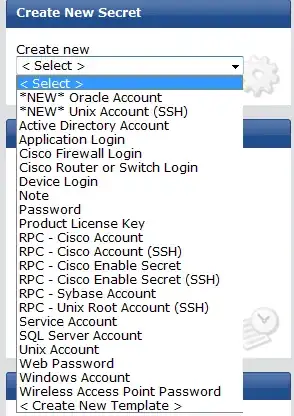Although I've seen many implementations of solutions to this problem, I believe that the most complete, if not perhaps the most convenient, was a Git repository restricted to super users only containing encrypted text files of passwords by environment. Managing the password rotation on the devices, mixed servers and dedicated devices such as modems, was handled separately.
This solution greatly simplified the distribution of new passwords as a simple update needed to be performed by users to receive the latest revision of the passwords as well as providing a traceable history of previous passwords for record keeping.
As I recall the files were GPG encrypted, but there are numerous solutions and viable approaches to handling the files themselves.
The obvious downside to this approach is that, especially when passwords have changed, you are decrypting one or more files searching for the required password(s). Of course, as with anything, the more frequently you use a password the more likely you are to memorize it and, depending on the device(s) in question, access may be an infrequent event which is not greatly hindered by having to go through a somewhat more lengthy process to gain the appropriate password.
If you are also interested in strategies and/or scripts for generating and/or changing passwords on servers and/or other devices I would be glad to share those that I employ as well.
--
I would be glad to.
I will assume that you are familiar with file encryption, PGP or otherwise. If this is erroneous please feel free to ask and I will be happy to provide some examples.
Setting up a Git repository is relatively straightforward and will display similarities to most any content management solution with which you may be experienced. One note with Git: it is, by design, fully open and, as such, will require additional steps to restrict access to specific files or repositories. This can be accomplished relatively simply by leveraging file system acl's (just one possible solution). That being said, I would certainly recommend that you use a solution with which you are comfortable and familiar, especially if alternate content management solutions are already in use at your organization.
The file(s) will, by definition, represent a password database correlating device identifier(s), such as hostname, to passwords and, potentially, to user names. For example: router-1.internetdomainwebsite.com administrator soopersekretpasswerd. Ideally you will never store the file unencrypted, however, following this strategy does make retrieving passwords relatively inconvenient. For this reason I recommend scripting an accessor to work within your encryption framework, perhaps taking an identifier as a search term and writing only the requested password to a file for one-time use by the requester.
Any device that supports password changes can be scripted. Since most devices support changing passwords from a CLI, I would recommend taking a look at the Expect language and/or its libraries for Perl, Python, or the language of your choice. I personally use a script that accepts the desired username, accepts the current password, accepts and verifies the desired password, then changes and verifies the change on all hosts passed or provided when prompted. Its fairly bare-bones Perl with Expect.
